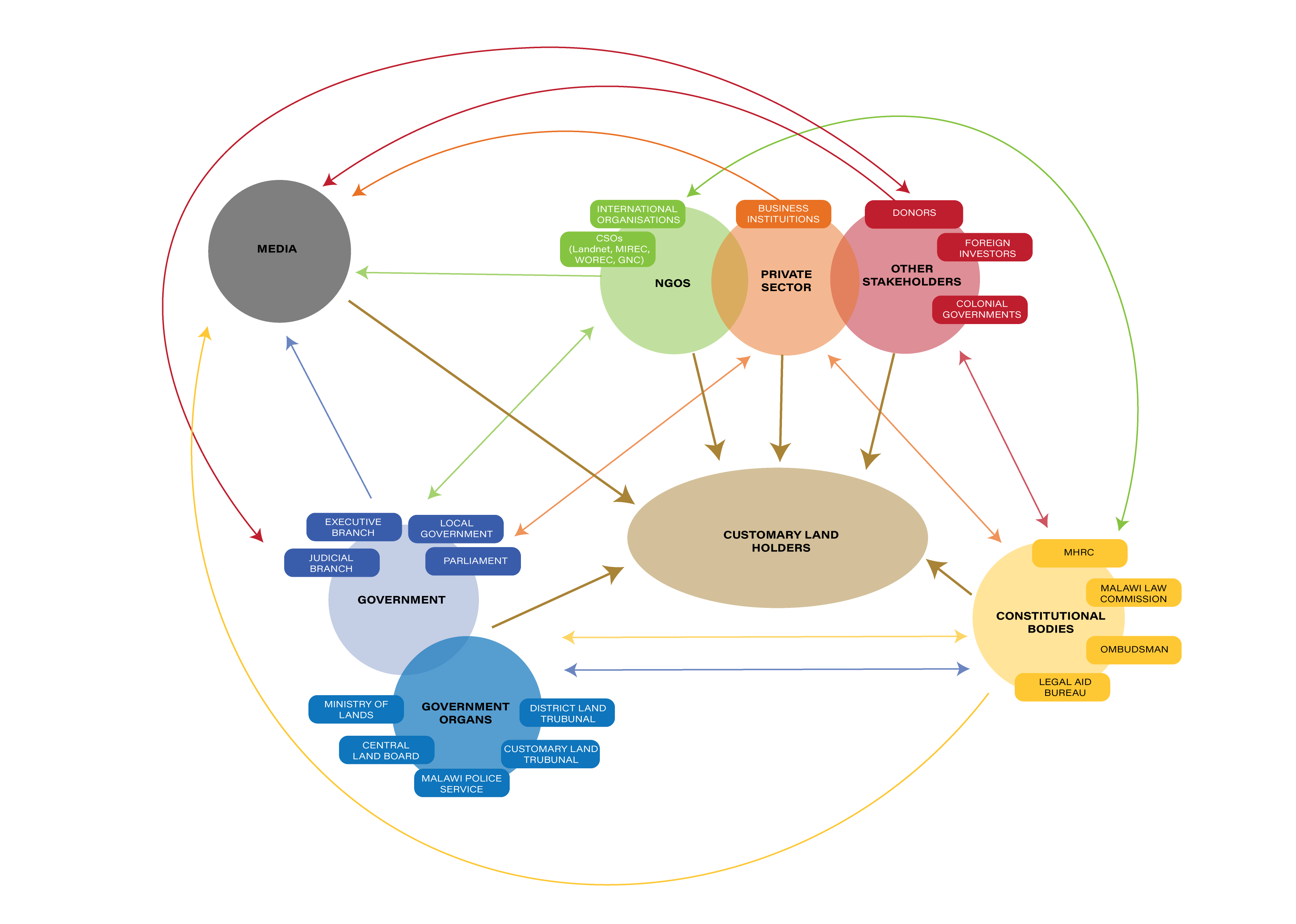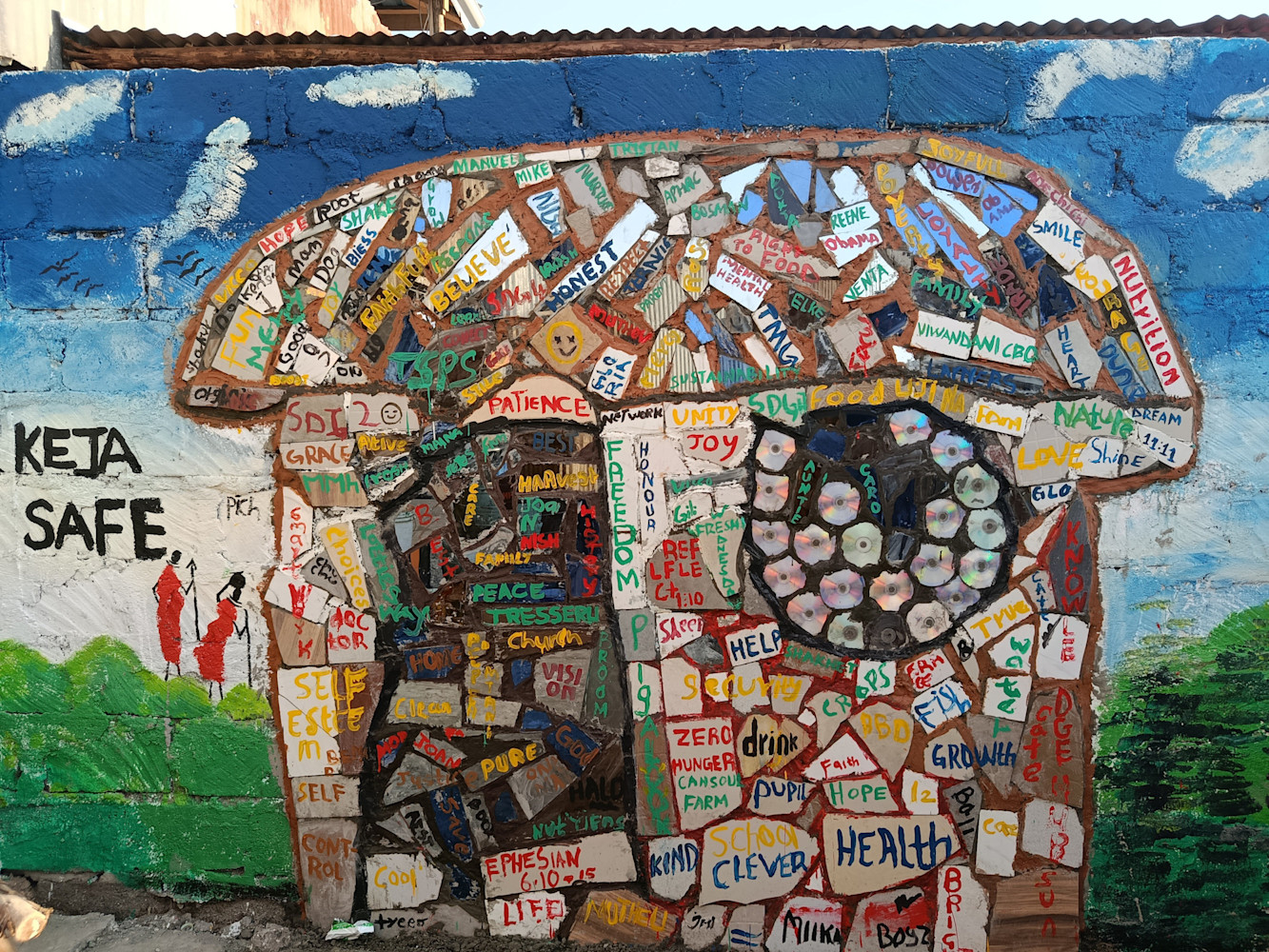Developing a human rights approach to land governance: a workshop report
How mapping stakeholder relations can help to improve land conflict resolution mechanisms
by Frederike Klümper, Harry Stopes | 2021-07-11

Land and property rights are an essential pathway for reducing poverty. Yet almost 1 billion people around the world describe themselves as land or property insecure, considering it likely that they will be evicted from their land in the next five years. Many are left landless, and denied access to adequate housing or food, two fundamental human rights which are often violated in evictions.
In Malawi 21 % perceive themselves as tenure insecure, though rates of insecurity vary across groups; while 30 % of renters feel insecure, the figure is only 14 % for landowners in Malawi. Feelings of insecurity and associated fears of eviction are compounded by the fact that 59 % of all land users do not have any property documentation. Though Malawi’s National Land Policy, enacted in 2016, introduced several laws to ensure tenure security and more equitable access to land, they often do not provide safeguards for all legitimate land rights holders, leaving some smallholders, especially marginalized groups, landless and thus also food insecure.
Why do we need a human rights-based approach to land governance?
The Voluntary Guidelines on the Responsible Governance of Tenure of Land, Fisheries and Forests (VGGT), a milestone agreement for land tenure developed in 2012 by the Committee on World Food Security and the FAO, aim to support countries in strengthening responsible land governance and protecting legitimate tenure rights holders. Although there is no recognised universal right to land, several human rights such as the right to food and the right to housing depend upon access to land; accordingly the VGGT guidelines are built on human rights principles and provide clear linkages to legally binding human rights.
However, in practice both global and national agendas often address land and human rights in isolation, and in many land conflict cases human rights violations remain unrecognised. Despite the linkages to human rights outlined in the VGGT, a particular system to systematically link human rights to land rights is missing.
Overcoming this problem is one of the aims of the Human Rights-Based Land Governance Project at TMG Research, which introduces a human rights-based land governance monitoring tool as a way of addressing the land and human rights nexus. The tool can be used by national human rights institutions, civil society organisations and communities working towards strengthening responsible land governance. The is a collaborative project with the Malawi Human Rights Commission, which is the main implementing body.
How are national human rights and land governance stakeholders interlinked? A workshop report
Implementing a human rights-based approach to land governance in Malawi will require an understanding, grounded in practical case studies, of how land governance and human rights actors interact. In order to begin gathering this knowledge, in early 2021 TMG Research hosted two workshops in Lilongwe and Blantyre in collaboration with Kainja & Dzonzi Consulting. Participants included representatives from the Malawi Human Rights Commission, representatives from the Ministry of Lands, local government, traditional authorities, civil society organisations, and the judiciary.

Participants of the second “Stakeholder Mapping Workshop” in Blantyre
Using the so-called “linkage mapping” tool, participants in each workshop worked collaboratively to draw up a “stakeholder map” of a single land conflict, focusing on how the conflict unfolded and the ways that stakeholders were involved in handling it. The Lilongwe workshop discussed a conflict which occurred in Kasungu District, while in Blantyre participants addressed a dispute over in Chikwawa District, while both land conflicts are connected to ownership disputes after land lease arrangements. Linkage mapping is a descriptive-analytical tool that can be used to identify and visualize the relationships between all the stakeholders party to or implicated in a given land conflict. The map was created by the workshop participants in an intuitive, iterative process: they first listed all stakeholders, then connected the different stakeholders, and finally discussed the relationships of the stakeholders (see figure below).

Consolidated stakeholder map representing the relationship between stakeholders in both land conflicts
Participants identified the central role of customary landowners in both conflicts, as well as the acute vulnerability of landless people to land conflict and associated human rights violations. Customary landowners are typically connected to local stakeholders and may be able to access land conflict resolution mechanisms at the local level. As the figure below indicates, if a land conflict is not resolved at the village level, the aggrieved party is free to take the issue to the Customary Land Tribunal (CLT), which sits at the Traditional Land Management Area level with the Traditional Authority as its chairperson. If parties are not satisfied with the CLT resolution, the dissatisfied party appeals to the District Land Tribunal (DLT). If the case is not resolved at this level then it goes to the Central Land Board, chaired by a Resident Magistrate, for final resolution.

A diagrammatic representation of the current legislative customary land conflicts resolution management as discussed by the participants.
This process is comprehensive in theory, yet when discussing the land conflict in Kasungu participants determined that the land conflict resolution mechanisms at the village level did not work for the rights holders. The conflict was long-running and complex, and was exacerbated by the absence of well-defined roles on the part of each stakeholder, as well as a lack of communication between stakeholders. Though both cases involved human rights violations, human rights actors were not involved by default from the beginning in either case. For example in Kasungu the Malawi Human Rights Commission was commissioned by a community-based organisation to conduct an independent investigation of the case only several years after it had begun.
Developing a human rights approach to land conflict resolution
Participants agreed that new or adapted ways to enforce land rights and resolve land conflicts are needed, finding that a general lack of collaboration and communication between stakeholders was very evident in cases of land conflict. While actors such as the Human Rights Commission, Office of the Ombudsman and civil society organisations are increasingly likely to become involved in customary land disputes, the law does not explicitly recognise their role. In the proposed human rights-based approach enabling dialogue and increasing accountability between different stakeholders would be key.
The complexity of land conflicts, as described in the workshop discussions and powerfully visualised in the stakeholder mapping exercise, means that greater coordination and cooperation between land governance and human rights stakeholders will be essential if a human rights approach is to be applied in the context of land conflicts. This type of collaboration should not only benefit the policy makers but it should be designed in a way that it is legible to all those concerned, including those whose rights are violated. As a traditional chief who participated in one of the workshops emphasised, strong linkages between stakeholders encourage a strong sense of shared responsibilities, as does the development of shared frames of reference. This, in turn, requires further discussion and the collaborative development of a set of principles, structures and practices that are consistent, transparent, just and based firmly upon human rights principles.
 Urban Food FuturesDec 09, 2025
Urban Food FuturesDec 09, 2025The story of Mukuru's Urban Nutrition Hub
In Mukuru informal settlement, a safe haven for women has grown into the Urban Nutrition Hub, a multi-purpose space for nutrition education, training, and community development, demonstrating the potential of grassroots community-owned innovation..
Serah Kiragu-Wissler
 Urban Food FuturesSep 29, 2025
Urban Food FuturesSep 29, 2025Cheaper food, higher costs: The paradox of Nairobi’s food systems
What are the hidden costs of foods sold in Nairobi's informal markets, and who must bear them? We discuss how the city could build food systems that are both affordable and fair—for consumers and the people who feed them.
Christian Sonntag, Emmanuel Atamba, Lumi Youm
 Land GovernanceJun 26, 2025
Land GovernanceJun 26, 2025Did 2024 - the year of the triple COP - change anything for land rights?
What did this “triple COP” moment really deliver for land rights? Can we keep the momentum up to advance gains made and push for bolder action?
Frederike Klümper


